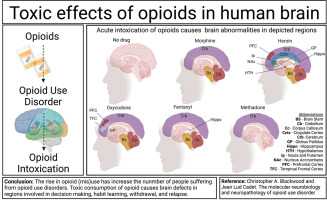Opioid Detox
Opioid Detox is the process of removing opioids, such as heroin, from your body. It can be done in various settings, including residential treatment centers and outpatient programs.
https://surfcityrecovery.com/opioid-detox/
During detox, patients receive medication to help reduce the symptoms of withdrawal, which can reduce drug cravings and relapse. They also receive counseling to learn more about their addiction and how to cope with life without using drugs.
Medically Supervised Detoxification
If you are an individual who has developed a dependence on alcohol, drugs like heroin or prescription opiates, or other potentially dangerous substances, you need medical help. Inpatient detoxification, with the help of medical professionals, is a safe and effective way to begin your recovery journey.
During a supervised medical detox, you will be able to go through withdrawal with the assistance of medications that relieve your symptoms and reduce cravings. Your progress will be closely monitored by a licensed healthcare professional and you will receive 24-hour support throughout the process.
The length of the detoxification will depend on the type of substance that you used, how much you abused it, your body chemistry, and any underlying conditions you have. The severity of the withdrawal symptoms also depends on these factors.
Medically Supervised Detoxification is an organized service that provides withdrawal management in a permanent facility with inpatient beds for patients who have withdrawal signs and symptoms sufficiently severe to require 24hour inpatient care (ASAM 2001). Services should be delivered under a set of policies and procedures or medical protocols.
Inpatient Detoxification
If you or a loved one is experiencing an opioid addiction, detoxification can be a vital first step towards sobriety. Inpatient detoxification offers a safe, medically-supervised environment in which to safely and comfortably rid the body of harmful drugs.
During detox, physicians and addiction specialists monitor your vital signs to minimize unpleasant symptoms such as anxiety, depression, irritability, hunger, and pain. This allows them to provide necessary medications and other therapies, which can help alleviate cravings and withdrawals, thereby guarding against relapse.
Inpatient detoxification may also include counseling and group therapy. These therapies can teach you how to manage your emotions and stay sober.
Inpatient detoxification may be done at a hospital or acute care center, or in a standalone medical detox facility. In these facilities, you will receive round-the-clock care from a team of medical and substance abuse professionals.
Outpatient Detoxification
Inpatient detoxification programs provide patients with medical care during their withdrawal process and can be highly effective in helping people to stop using opiates. However, they are expensive and can disrupt their lives.
Outpatient Detoxification is a less expensive alternative that can be accessed by people who want to stop using opiates but don’t need a full-time commitment. Outpatient programs typically use medication to ease withdrawal symptoms, such as methadone or buprenorphine.
Benzodiazepines, such as chlordiazepoxide (Ativan), diazepam, lorazepam, and clonidine, may also be used during outpatient detox to help prevent seizures or other symptoms that may occur during withdrawal.
If you are planning on going through outpatient detox, it is important to have a supportive living situation and be ready to make it a regular part of your daily life for at least a week. If you have a history of relapse or severe withdrawal symptoms, such as delirium tremens, a residential treatment program may be recommended.
Pre-Detoxification
Detoxification is the first stage of a treatment program that can help individuals overcome their opioid addiction. It is not a cure for addiction, but it can be helpful in reducing withdrawal symptoms and preventing relapse.
The medically supervised detoxification procedure reduces the shock to the body and mind as it comes off the opioid drug. It is designed to minimize withdrawal symptoms, which are typically extremely uncomfortable and can lead to relapse if not treated properly.
During the process, patients may also be prescribed medications to ease their symptoms and help them transition into their next phase of treatment. These medications can be a partial opioid agonist like buprenorphine or an opiate antagonist such as naloxone.
While many patients are able to stay clean and sober after opioid detoxification, a small number may still need additional medication or therapy after the drug has been removed from their system. This can help them regain mental and physical health, and address larger goals of improving employment, healing relationships or addressing past criminal behavior.






